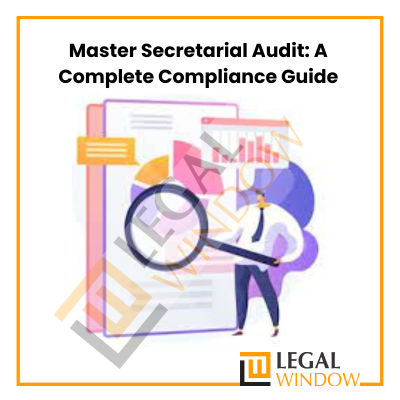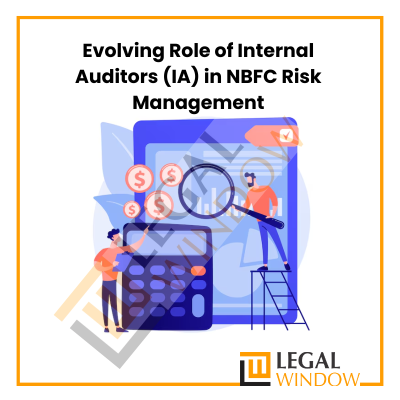 The Tax Auditors and the assessee are both concerned about ‘Clause 44’ in the tax audit report in Form 3CD, which deals with reporting obligations connected to GST spending. The issue stems from the application of clause 44 of Form 3CD for the fiscal year 2022-23 or FY 2021-22. This article attempts to understand the reporting in Clause 44 of Form 3CD of the Tax Audit Report due to be filed for the fiscal year (AY 2022-23).
The Tax Auditors and the assessee are both concerned about ‘Clause 44’ in the tax audit report in Form 3CD, which deals with reporting obligations connected to GST spending. The issue stems from the application of clause 44 of Form 3CD for the fiscal year 2022-23 or FY 2021-22. This article attempts to understand the reporting in Clause 44 of Form 3CD of the Tax Audit Report due to be filed for the fiscal year (AY 2022-23).
Key Abstract
An audit is a process of examining and confirming accounts, transactions, or records. A tax audit is conducted to determine if a certain taxpayer is following all of the rules of the nation’s income tax legislation. The audits of the taxpayers specified under Section 44AB of the Income Tax Act, 1961 are covered by that section. The taxpayers specified under Section 44AB may be professionals or businesspeople. They must have a CA audit their books of accounts (chartered accountant). The CA examines, confirms, and draughts the audit report on the accounts. The tax audit report includes information on the audit’s conclusions and observations. The goal of the report is to make sure that the taxpayer is abiding by the law and that the books of accounts are correct.
The History of the Tax Audit Report
Every individual operating in business is required by the Income Tax Act, of 1961 to have his accounts audited if his total sales, turnover, or gross revenues in business exceed Rs. 1 crore in any preceding year. The Tax Audit turnover ceiling has been raised to Rs. 5 crores for businesses operating under Section 44AB and generating at least 95% of their revenue from digital transactions.
The turnover ceiling for mandatory tax audits has been enhanced to Rs. 10 crores under the Finance Act, 2021.
If a person carries on a profession, he is compelled to have his accounts audited if his gross receipts in the preceding year exceed Rs. 50 lakh.
The Finance Act, of 2020 changed the due date for filing tax audit reports to one month before the due date for producing the return of income under Section 139 (1).
Meaning of Tax Audit Report
Using certain “Audit Forms” that have been established by the income tax department, the individual performing the audit must record their findings in a report.
Forms 3CA and 3CB are mandated under Section 44AB. The auditor must also provide a form 3CD in addition to these two forms.
CBDT Notification on Clause 44 of Form 3CD
Notification No. 33/2018 dated 20.07.2018 changed Form 3CD of Tax Audit Report (TAR) in July 2018 to include, among other things, Clause 30C on reporting GAAR transactions and Clause 44 on reporting GST transactions.
30C:-
- whether the assessee engaged in an unlawful avoidance arrangement, as defined in section 96, during the preceding year. (Yes/No.)
- If yes, please explain:
- Characteristics of an improper avoidance arrangement:
- Amount (in Rs.) of tax advantage accruing to all parties to the agreement in the preceding year:
44:-
Total spending breakdown by registered and unregistered entities:
| Sl No | The total amount of Expenditure incurred during the year | Expenditure in respect of entities registered under GST | Expenditure relating to entities not registered under GST | |||
| Relating to goods or services exempt from GST | Relating to entities falling under the composition scheme | Relating to other registered entities | Total payment to registered entities | |||
| (1) | (2) | (3) | (4) | (5) | (6) | (7) |
History of Form 3CD Clause 44
The aforementioned 2018 notice becomes effective on August 20, 2018. As a result, every tax audit report that must be filed on or after August 20, 2018, must include a total expenditure report in accordance with Section 44 of the Form 3CD.
On July 20, 2018, a notification for the modification of Form 3CD that included Clause 44 was released, and one month later, on August 20, 2018, Clause 44 became effective.
Huge amounts of data must be compiled and organized in order to comply with clause 44’s reporting obligation. In particular, where the accounting records were not kept in such a manner, a sudden introduction of such a clause in the middle of the financial year with implications for vast amounts of data would put tax auditors and the assessee through excruciating pain.
Therefore, requests were made to the Board to take into account the true problems of the taxpayers and to postpone the application of this clause until the following fiscal year.
In accordance with section 119 of the Act, the CBDT issued Circular No. 06/2018 on August 17, 2018, which suspended the application of Clause 44 in Form 3CD until the end of March 2019. The time period for submitting tax audit reports with Form 3CD for the fiscal year 2017–18 (AY 2018–19) was August 2018. The application of clause 44 was postponed until FY 2018–19 by this abeyance decision.
With CBDT Circular No. 09/2019 dated 14.05.2019, the CBDT again postponed the implementation of clause 44 of Form 3CD until March 31, 2020, making these clauses relevant from April 1, 2020.
By an Order u/s 119 dated 24.04.2020 issued vide Circular No. 10/2020 dated 24.04.2020, the CBDT once more extended the application date of Clause 44 of Form 3CD until March 2021 in response to the COVID-19 epidemic and the nationwide lockdown imposed in March 2020. Once more, the CBDT deferred and delayed the reporting obligation of Clause 44 pertaining to GST in Form 3CD of the Tax Audit Report from 31.03.2021 to 31.03.2022 by an Order dated 25.03.2021. This Order, dated March 25, 2021, is a result of Circular No. 05/2021, dated March 25, 2021.
After then, no Order of the Board is issued extending the validity of Clause 44 of Form 3CD beyond March 31, 2022.
Analysis of Clause 44 of Tax Audit Report in Form 3CD
Clause 44 of Form 3CD requires the entire amount of expenditure incurred during the preceding year to be reported.
Clause 44 mandates reporting the breakdown of total expenses expended. As a result, under this paragraph, head-by-head reporting of total spending is required in Form 3CD. Furthermore, whether the assessee is registered for GST or not, this provision must be disclosed by all reporting assessees. Even if a person is not registered for GST, a breakdown of total expenditure in the statutory table must be provided.
The analysis of column (1) of the table, which demands the mention of the serial number, implies that expenses must be recorded head-by-head. If it is deemed to be a consolidated figure, there is no need to include the serial number in the table. The Form 3CD utility allows you to add more than one row. However, the potential of a counter-argument cannot be ruled out. Furthermore, reporting under this provision is essential for all expenditures—both income and capital expenditure.
These expenses must also be divided into separate components, as described in column (3) through column (7) of clause 44’s table.
Columns (3) to (6) need to report how much of the total expenditure reported in column (2) is ascribed to GST-registered companies, whereas column (7) requires reporting how much of the total expenditure reported in column (2) is attributable to GST-unregistered organizations
Column (3) of the table under clause 44 of Form 3CD requires reporting how much of the total expenditure stated in column (2) is attributable to GST-exempt items or services. In other words, this column must reflect GST-exempt expenditure.
Column (5) of the table under clause 44 of Form 3CD requires reporting how much of the total expenditure stated in column (2) is connected to GST-registered entities. In other words, the expense incurred with GST-registered merchants must be disclosed in this column.
Column (6) of the table under clause 44 of Form 3CD requires the amount paid to GST-registered firms in the preceding year to be reported.
Column (7) of the table in clause 44 of Form 3CD requires reporting how much of the total expenditure stated in column (2) is attributable to companies that are not GST registered. In other words, this column mandates the disclosure of expenditures made by unregistered individuals.
Through its qualified staff, Legal Window guarantees you a high degree of satisfaction, prompt delivery of the GST Registration Certificate, and better handling of governmental requirements.
Applicability of Clause 44 of the Tax Audit Report
The following words are included in the text of Circular No. 5/2021, dated March 25, 2021, which delays the application of Article 44:
The Board has agreed to postpone reporting under clauses 30C and 44 of the Tax Audit Report until 31st March 2022 because of the current circumstances brought on by the COVID-19 epidemic across the nation.
The Order’s language above leaves room for interpretation as to whether Clause 44 of Form 3CD shall be inapplicable until all tax audit reports are submitted by March 31, 2022, or if the abatement is only applicable to the fiscal year that ends on that date, which corresponds to FY 2021–2022. Currently, after 31.03.2022, the tax audit report and Form 3CD must be provided for FY 2021–22.
Reading the contents of the Order of 2018, which was released for the first time with the addition of clause 44 in Form 3CD, clarifies this. “Reporting under the proposed clause 30C and proposed clause 44 of the Tax Audit Report must be maintained in abeyance until 31st March 2019,” it was expressly stated in that Order. Therefore, the tax auditors will not be required to provide the data requested under the aforementioned clauses 30C and 44 of the Tax Audit Report for reports that are provided on or after August 20, 2018, but before April 1, 2019.
Clause 44’s application was suspended for tax audit reports submitted with Form 3CD up until the end of March 2019. A TAR must include clause 44 if it is provided on or after April 1, 2019. It was true that TAR for FY 2017–18 may have been provided up to 31.03.2019. Tax audit reports for FY 2018–19 were to be provided as of 1.4.2019.
Although the requirement was also postponed, it is still in effect until 31.03.2022. In light of this, clause 44’s application was suspended until March 31, 2022, for any tax audit reports that were to be submitted by that time.
Tax auditors will be obligated to provide the information requested under clause 44 of Form 3CD of the Tax Audit Report if supplied on or after 01.04.2022, absent any additional abeyance orders.
Tax audit reports for the FY 2021–22 or AY 2022–23 must generally be provided on or after April 1, 2022.
Punishment for Failing to File the Tax Audit Report
The taxpayer will be held responsible if he fails to have his books of accounts audited or fails to submit or file the audit report. A fine may be imposed under Section 271B of 1961 IT return filing Act by the Assessing Officer (AO). The lowest fine might be 0.5% of the entire sales, turnover, or gross earnings, while the maximum fine could be Rs. 150,000.
 Takeaway
Takeaway
We really hope that this post was useful in providing information on the tax audit report. Checking, evaluating and inspecting documents, transactions, and accounts are all part of a business audit. A tax audit is the verification and examination of financial records to ensure that the taxpayer complies with the aspects of income tax legislation. To make sure that all of the requirements of the Income Tax Act, of 1961 are followed; the required tax audit must be conducted. The taxpayer can be required to pay a fine if the audit report is not filed within the allotted time frame.
CA Pulkit Goyal, is a fellow member of the Institute of Chartered Accountants of India (ICAI) having 10 years of experience in the profession of Chartered Accountancy and thorough understanding of the corporate as well as non-corporate entities taxation system. His core area of practice is foreign company taxation which has given him an edge in analytical thinking & executing assignments with a unique perspective. He has worked as a consultant with professionally managed corporates. He has experience of writing in different areas and keep at pace with the latest changes and analyze the different implications of various provisions of the act.
Categories
- Agreement Drafting (23)
- Annual Compliance (11)
- Change in Business (36)
- Company Law (148)
- Compliance (90)
- Digital Banking (3)
- Drug License (3)
- FEMA (17)
- Finance Company (42)
- Foreign Taxation (6)
- FSSAI License/Registration (14)
- GST (119)
- Hallmark Registration (1)
- Income Tax (200)
- Latest News (34)
- Miscellaneous (164)
- NBFC Registration (8)
- NGO (14)
- SEBI Registration (6)
- Section 8 Company (7)
- Start and manage a business (21)
- Startup/ Registration (130)
- Trademark Registration/IPR (40)
Recent Posts
- Hostel Facilities for Students/Working Women Eligible for GST Exemption: Madras HC May 3, 2024
- NGO Darpan Registration in Jaipur May 2, 2024
- Registration of Charges with ROC May 1, 2024
About us
LegalWindow.in is a professional technology driven platform of multidisciplined experts like CA/CS/Lawyers spanning with an aim to provide concrete solution to individuals, start-ups and other business organisation by maximising their growth at an affordable cost.








